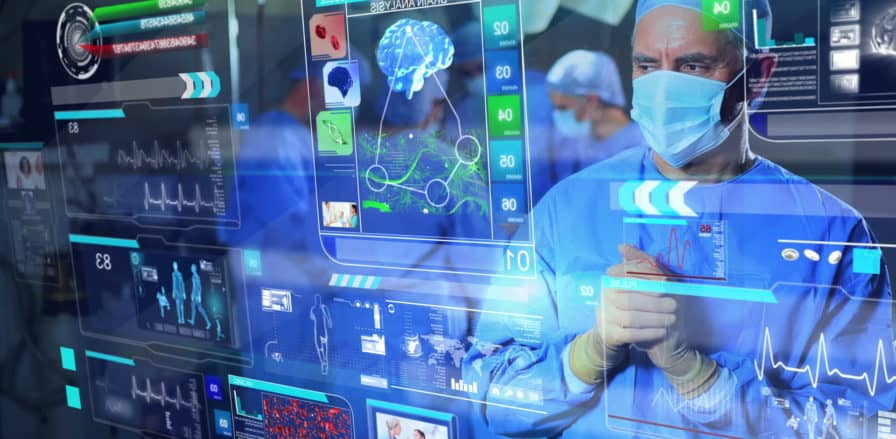
By Rodney D. Reider
With challenges such as the rising cost of healthcare, red tape that can create obstacles to providing quality patient care, or adjustments that come with increased transparency requirements, it can be easy to let discouragement color your outlook on the future of the healthcare industry. But I sincerely believe that this is the best time in history to be part of this field. We have the ability to impact people’s lives and futures like never before. There are countless technological innovations that are truly providing better care for patients at lower cost, creating better patient experiences and thriving communities.
I have had the privilege of working with several developers and inventors who are designing cutting-edge innovations that give me such hope and excitement for the future of healthcare. Here are just a few examples:
Improving patient experience
Wait times in a clinic or hospital ER have long been pain points for patients—and healthcare organizations are feeling the pain too in the form of low patient satisfaction scores that negatively impact reimbursement from insurance companies. Technology is being developed that gives updates on wait times and care directly to the phones of people in the waiting room via Bluetooth connections. Furthermore, hospitals can use this data to track and improve their process flow to reduce wait times, educate their staff, and lower the cost of care by increasing efficiency.
In cancer care, treatment teams are implementing technology that allows them to have continual communication with patients and their families. Patients can pull up detailed notes from their meeting with their doctor and communicate more directly and efficiently with their treatment team, rather than calling and waiting until the doctor has time to respond to their message. Patients can also give regular feedback after chemotherapy or other treatments to improve the quality and effectiveness of their care.
Empowering patients
There are numerous technologies in development that allow patients to play an active role in improving their health and quality of life. People who are unable to communicate after suffering a stroke have long used keyboards attached to a speaker to give them a voice. But now, there is technology that tracks their eye movements as they look at words and letters on a specialized screen to communicate to through the speaker. Exoskeletons are being developed that give the ability to walk to those who cannot do so independently whether from a stroke or other paralysis.
Those with hearing impairments can use recently-developed Bluetooth-enabled hearing aids to hear more clearly while driving. Some hearing aids can even translate from different languages.
Clinics often get visits from patients because they don’t understand how to take their medication. With technology, prescribing doctors can intervene before patients have to come into the clinic.
I met recently with a woman whose infant had allergic reactions to her breastmilk. In response, she developed a way to test the milk on a test strip to discover what was in the milk that was causing the reaction.
Allowing doctors and hospital staff to do what they do best
So much of physicians’ valuable time is spent entering information and codes into their patients’ electronic health records rather than using their giftings to care for their patients. Voice-to-text technology is being used to allow doctors to give notes verbally instead of manually, freeing them up to use their time doing what they do best.
On the business side, automation technology is taking over lower-level repetitive tasks. This frees up back-office professionals to work on higher-level tasks that require their unique expertise. Automation is also shown to reduce error, which increases revenue and gives healthcare organizations the opportunity to invest more in their employees.
Forming partnerships
Healthcare organizations and insurance companies are partnering with startups and developers of new technologies more than ever before. Several hospitals and health systems are creating innovation centers to provide a place where startups can come to develop their technology. This allows developers to conduct their pilot in the United States, and in exchange the hospital gets equity in that tech company, sharing in revenue and serving on the board to steer the company, all while actively improving people’s lives through their investment.
Insurers are working with community health organizations to understand how they can improve health in their communities through prevention. Increasingly, it is the insurance companies that are stepping up to invest in innovative technology improving patient outcomes.
As I look to the new year, I am energized by all the is being made possible through new, innovative technologies that are improving people’s health. What gives you hope for the future of healthcare as you look forward to 2020?
About Rodney D. Reider
For more than 25 years, Rodney has been involved in the healthcare industry and has positioned organizations to adapt to the continuously and rapidly changing healthcare environment. An International Scholar twice-over, he has a thirst for knowledge and a drive to explore, create and support innovative solutions within the healthcare space that make a lasting impact. He writes about healthcare innovation and leadership at rodneyreider.com.
The Editorial Team at Healthcare Business Today is made up of skilled healthcare writers and experts, led by our managing editor, Daniel Casciato, who has over 25 years of experience in healthcare writing. Since 1998, we have produced compelling and informative content for numerous publications, establishing ourselves as a trusted resource for health and wellness information. We offer readers access to fresh health, medicine, science, and technology developments and the latest in patient news, emphasizing how these developments affect our lives.








